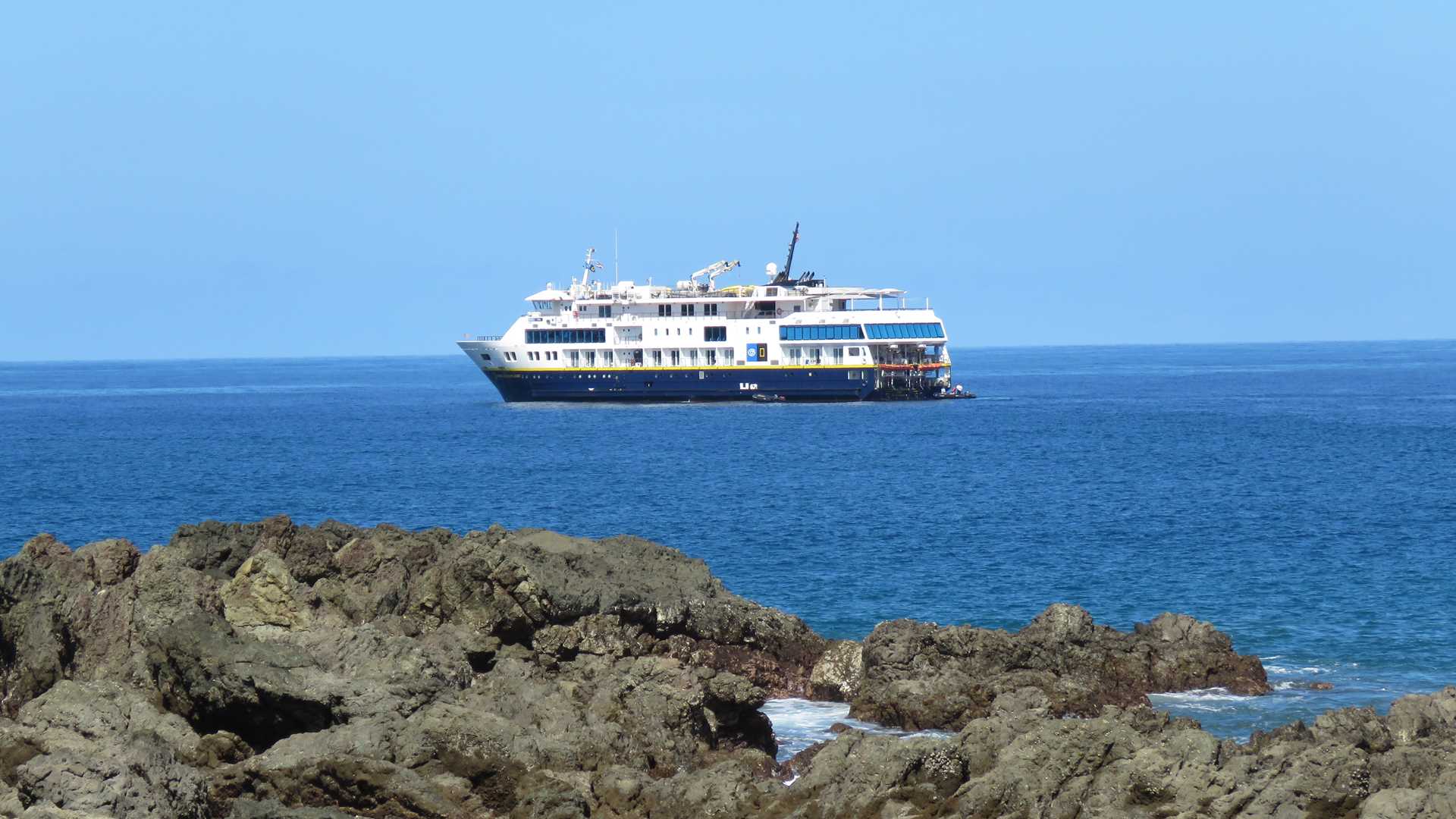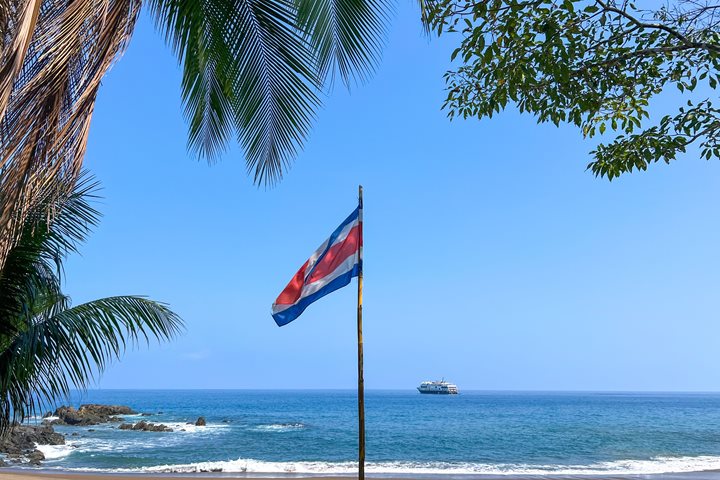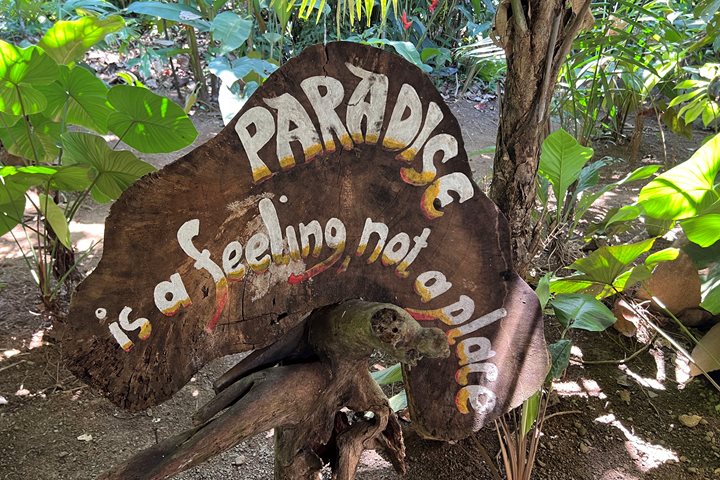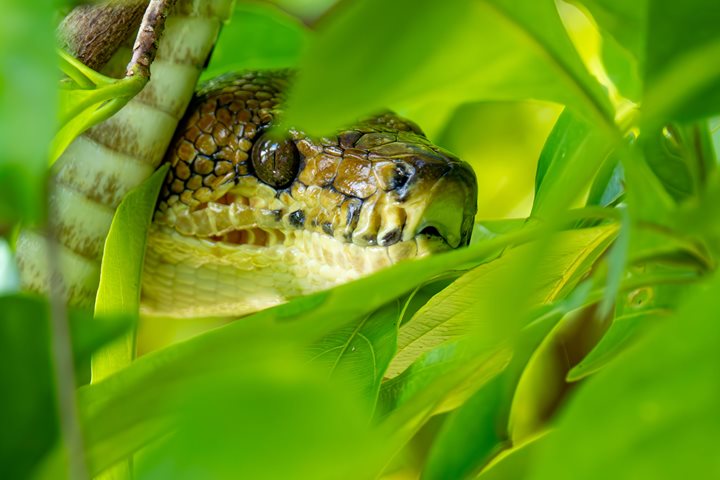We arrived at Osa Peninsula for a great adventure and disembarked to visit the rainforest. The peninsula is one of the most protected areas in the country. Guests split into groups for various activities, and they enjoyed the pure air and peace in this special place. We observed monkeys, birds, and the splendor of the tropical rainforest. At noon, we boarded the ship for lunch and to charge our batteries for another adventure.
At 2:00 p.m., we began an incredible journey along the Agujitas River. The river gets its name from a type of needlefish (pez aguja) that frequents the river during specific seasons. The river is very close to Drake Bay, which is one of the most famous tourist spots in the country due to its proximity to Corcovado National Park, Cano Island Biological Reserve, and the Terraba-Sierpe Wetland. As the tide began to rise, we were able to access the river and enjoy the primary forest and some of its guests. We spotted howler monkeys, some herons, and a group of capuchin monkeys that decided to use a hanging bridge during the second round of our river tours. Without a doubt, today was an incredible experience that we will remember!







